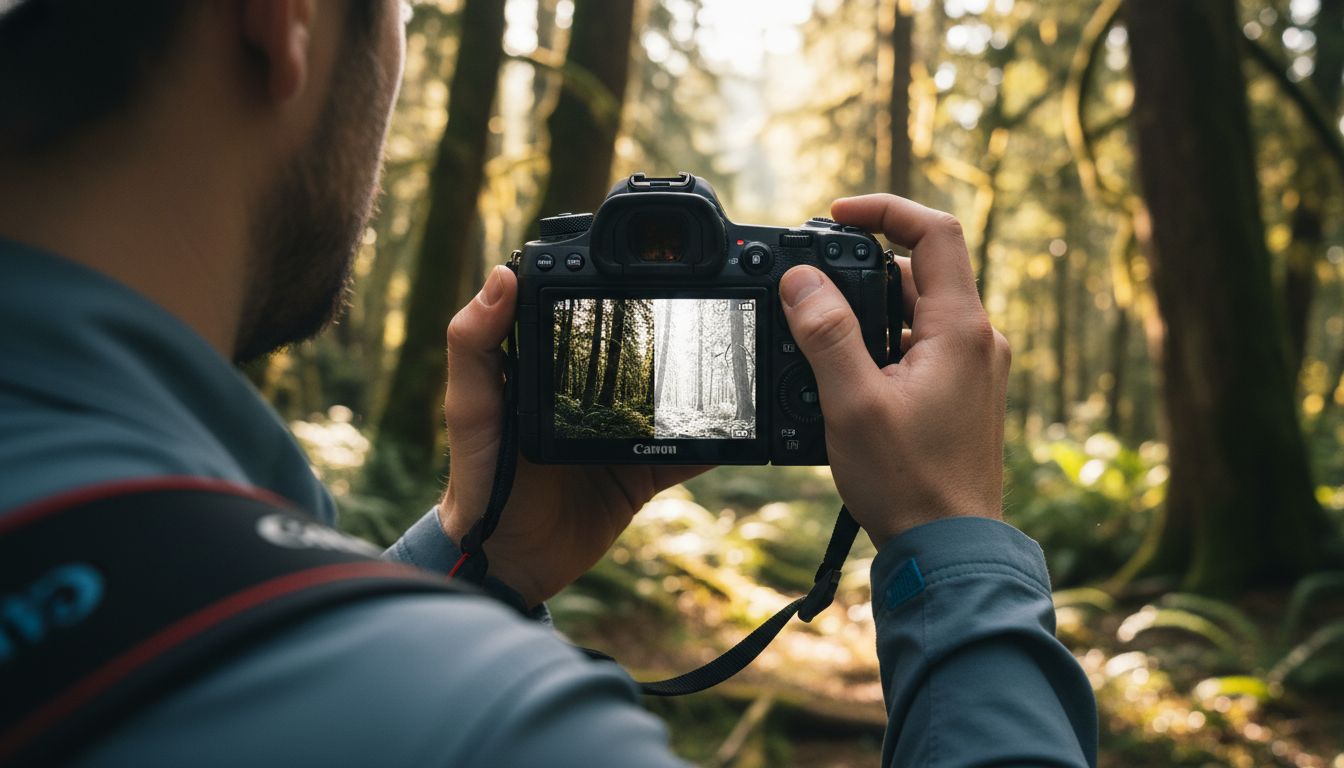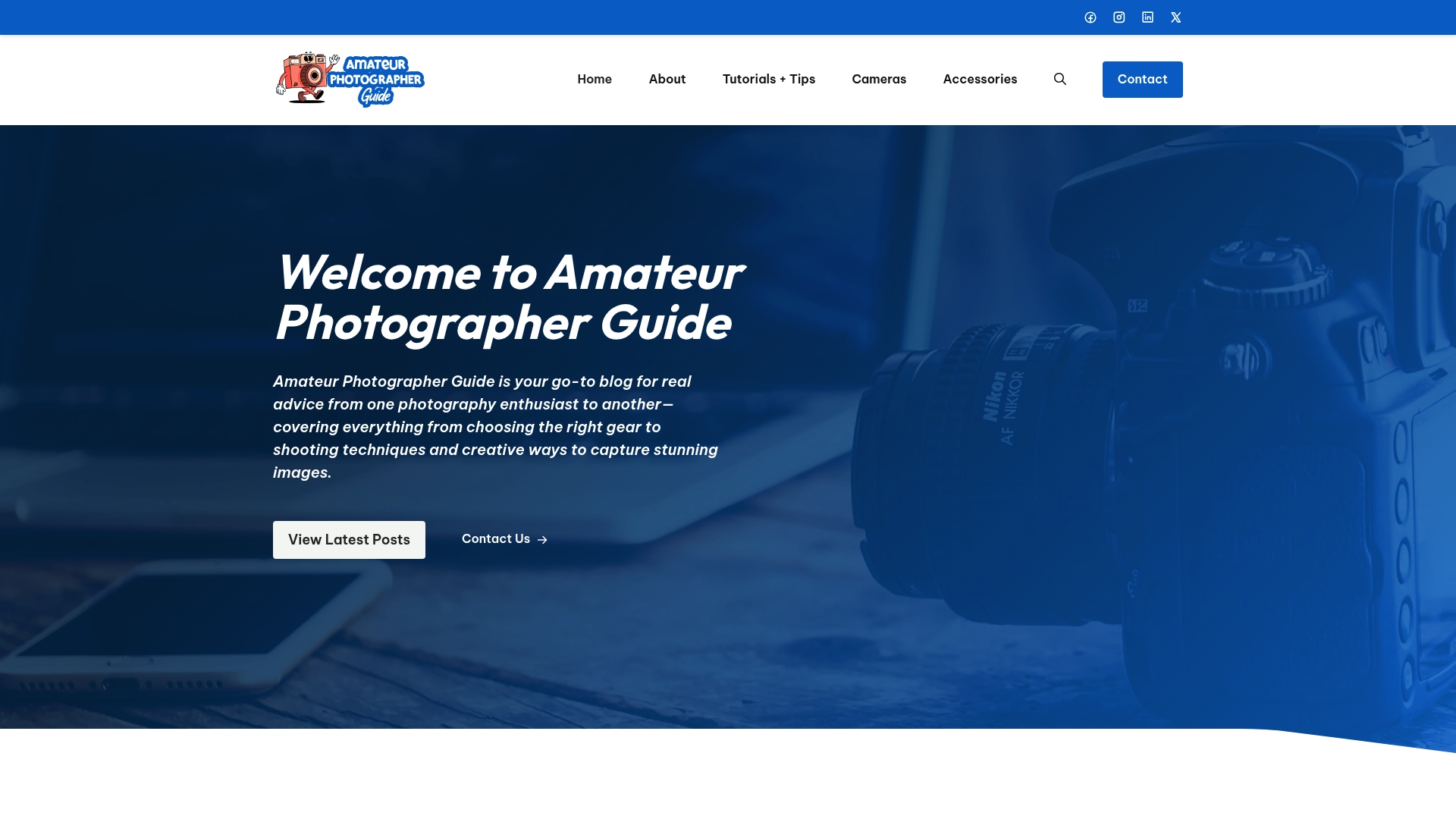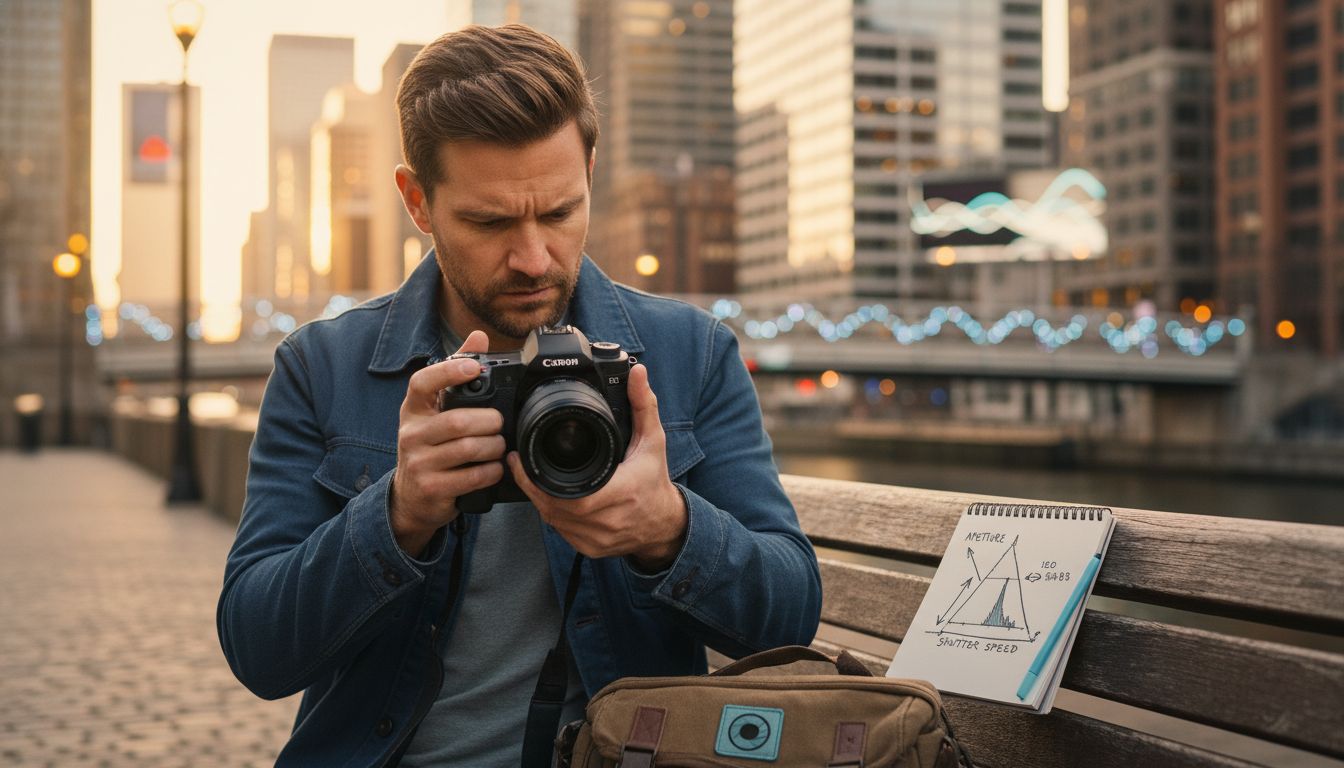Table of Contents
This blog post may contain affiliate links. As an Amazon Associate I earn from qualifying purchases.
Did you know that over 80 percent of beginner photographers struggle with exposure mistakes when learning to use their cameras? Getting exposure right can be the difference between stunning photos and missed moments. Understanding how light works with your camera settings opens the door to creative control and sharper, more beautiful images every time you press the shutter.
Key Takeaways
| Point | Details |
|---|---|
| Exposure Triangle | Mastering aperture, shutter speed, and ISO is essential for achieving balanced exposure in photography. |
| Creative Control | Adjusting camera settings allows photographers to manipulate depth of field, motion blur, and image noise for artistic expression. |
| Common Mistakes | Overexposure and underexposure are frequent issues; understanding settings and using a histogram can mitigate these errors. |
| Practical Experience | Regular practice in various lighting conditions enhances intuitive adjustments and creative decision-making in capturing images. |
Defining Exposure in Photography
Photographic exposure represents the fundamental process of capturing light through your camera’s sensor to create an image. Just like a chef carefully balances ingredients, photographers must skillfully balance three critical elements to achieve perfect exposure: aperture, shutter speed, and ISO. Think of exposure as a delicate dance of light that determines whether your photograph appears bright, dark, or just right.
At its core, exposure measures the amount of light that reaches your camera’s image sensor during a single photograph. Imagine your camera sensor as a canvas waiting to be painted with light. Too little light results in a dark, underexposed image where details disappear into shadows. Too much light creates an overexposed photograph where highlights become washed out, losing intricate details and nuance. Understanding exposure requires mastering the intricate balance of three interconnected settings:
- Aperture: Controls the size of the lens opening, determining how much light enters
- Shutter Speed: Manages how long the camera’s shutter remains open
- ISO: Determines the sensor’s sensitivity to available light
This trio of settings forms what photographers call the exposure triangle. Each element plays a crucial role in determining the final look of your image. A wider aperture lets in more light but reduces depth of field, while a faster shutter speed can freeze motion but might require higher ISO in low light.
 Your ability to manipulate these settings transforms photography from a technical craft into an art form, allowing you to capture precisely the mood, atmosphere, and visual story you envision.
Your ability to manipulate these settings transforms photography from a technical craft into an art form, allowing you to capture precisely the mood, atmosphere, and visual story you envision.
Here’s a comparison of how each element of the exposure triangle affects your images:
| Setting | Exposure Effect | Creative Impact |
|---|---|---|
| Aperture | More light with wider opening Less light with narrower opening |
Shallow vs. deep depth of field Blurry vs. sharp background |
| Shutter Speed | More light with slower speed Less light with faster speed |
Motion blur vs. frozen action |
| ISO | Brighter with higher ISO Darker with lower ISO |
More digital noise at high ISO Cleaner images at low ISO |
The Exposure Triangle: Aperture, Shutter, ISO
The exposure triangle represents the fundamental relationship between three critical camera settings that work together to control how light creates an image. Each component plays a unique role in determining the final photographic result, much like musicians in a band creating harmony through their individual instruments. While each setting impacts exposure, they also influence other aspects of image quality such as depth of field, motion blur, and image noise.
Aperture controls the lens opening size, directly affecting how much light enters the camera and the image’s depth of field. Think of it like a camera’s pupil expanding or contracting. A wider aperture (smaller f-number like f/1.8) allows more light and creates a shallow depth of field with blurred backgrounds. A narrower aperture (larger f-number like f/16) lets in less light but keeps more of the scene in sharp focus. Learn more about camera settings to understand these nuanced adjustments.
Shutter Speed determines how long the camera’s sensor is exposed to light by controlling how quickly the shutter opens and closes. Faster shutter speeds (like 1/1000 second) freeze motion and reduce light intake, while slower speeds (like 1/30 second) allow more light and can create motion blur. Photographers use shutter speed strategically to capture everything from crisp action shots to dreamy waterfall scenes.
ISO represents the sensor’s light sensitivity. Lower ISO values (100-400) produce cleaner images with less digital noise, ideal for bright conditions. Higher ISO settings (800-3200) increase light sensitivity, allowing photography in darker environments but potentially introducing graininess. Balancing these three elements transforms technical camera operation into a creative art form, giving photographers precise control over their visual storytelling.
![]()
How Camera Settings Affect Exposure
Camera settings dramatically transform the way light is captured, turning technical adjustments into powerful creative tools. Each setting interacts dynamically with others, creating a complex dance of light and sensitivity that determines the final image’s appearance. Understanding how these settings influence exposure allows photographers to move beyond automatic modes and take full creative control of their images.
Aperture’s impact on exposure is particularly nuanced. When you adjust the lens opening, you’re directly controlling the volume of light entering the camera. A wider aperture (smaller f-number) floods the sensor with more light, brightening the image while simultaneously reducing depth of field. Conversely, a narrower aperture (larger f-number) restricts light, darkening the image but keeping more of the scene in sharp focus. Learn more about camera modes to understand how these technical choices translate into visual storytelling.
Shutter speed offers another critical lever for exposure control. Faster shutter speeds (like 1/2000 second) dramatically reduce light intake, creating darker images but freezing fast-moving subjects with crystal clarity. Slower speeds (such as 1/30 second) allow more light to reach the sensor, brightening the image while potentially introducing motion blur. This gives photographers incredible flexibility in capturing everything from split-second action to dreamy, flowing landscapes.
ISO provides the final exposure adjustment, controlling the sensor’s light sensitivity. Lower ISO values (100-400) produce clean, noise-free images in bright conditions, while higher settings (800-3200) amplify light sensitivity, enabling photography in darker environments. However, increased ISO comes with a trade-off: higher sensitivity introduces digital noise, creating a grainy texture that can reduce image quality. Mastering these settings means understanding not just how to achieve correct exposure, but how to craft images that match your creative vision.
Balancing Light for Correct Exposure
Correct exposure is the delicate art of capturing precisely the right amount of light to create a visually compelling photograph. Like a master chef balancing flavors, photographers must carefully blend aperture, shutter speed, and ISO to transform light into a perfect visual representation of their creative vision. The goal isn’t just technical accuracy, but creating an image that communicates emotion, depth, and intention.
Achieving balanced exposure requires understanding the intricate relationships between camera settings. When one setting changes, photographers must compensate by adjusting the others to maintain proper light capture. A wider aperture might demand a faster shutter speed, while low light conditions could necessitate increasing ISO. Learn how to fine-tune exposure compensation to master these nuanced adjustments and prevent over or underexposed images.
Light measurement becomes critical in this balancing act. Professional photographers use tools like light meters and camera histograms to precisely gauge exposure levels. A histogram reveals the distribution of light and dark tones across an image, helping photographers make real-time adjustments. The ideal histogram looks like a gentle mountain, with peaks centered and no extreme clipping at the shadows or highlights. This visual feedback allows for immediate correction, ensuring each photograph captures the scene exactly as intended.
Every photographic environment presents unique exposure challenges. Bright sunlight, deep shadows, reflective surfaces, and low-light conditions each require a different approach to balancing light. Experienced photographers develop an intuitive sense of how to adjust settings rapidly, transforming technical knowledge into fluid, creative decision-making. The key is practice, patience, and a willingness to experiment. By understanding how each camera setting influences light capture, you’ll gradually develop the skill to turn technical constraints into powerful creative opportunities.
Common Exposure Mistakes and Solutions
Exposure mistakes can transform a potentially stunning photograph into a visual disappointment. Most photographers, regardless of skill level, encounter challenges with overexposure, underexposure, and inconsistent lighting that can seemingly ruin an otherwise perfect shot. Understanding these common pitfalls is the first step toward creating consistently well-exposed images that capture your creative vision.
Overexposure represents one of the most frequent errors photographers encounter. When too much light floods the sensor, image details become washed out, losing texture and nuance in highlights. The telltale signs include completely white or blown-out areas where intricate details vanish. Conversely, underexposure creates images shrouded in darkness, where shadows consume important visual information. Explore our guide on common photography mistakes to develop strategies for recognizing and correcting these exposure challenges.
Each camera setting contributes to potential exposure errors. A high ISO can introduce digital noise, making images appear grainy and unprofessional. Extremely fast or slow shutter speeds can create unintended motion blur or freeze action too rigidly. Aperture miscalculations might result in insufficient depth of field, leaving critical elements of your composition out of focus. Professional photographers develop an intuitive understanding of these interactions, learning to make split-second adjustments that transform potential mistakes into creative opportunities.
Mitigating exposure mistakes requires a combination of technical knowledge and practical experience. Practice using your camera’s histogram as a real-time exposure guide, which provides a graphical representation of light distribution across your image. Learn to recognize warning signs like blinking highlights on your camera’s display, which indicate areas of potential overexposure. Experiment in various lighting conditions, understanding that each environment presents unique challenges. The most successful photographers view exposure not as a rigid set of rules, but as a flexible creative tool that can be manipulated to express their unique visual perspective.
Master Exposure and Elevate Your Photography Skills Today
Struggling to balance aperture, shutter speed, and ISO for the perfect shot can feel overwhelming. This guide on exposure highlights the challenges many amateur photographers face when trying to control light and capture stunning images. Understanding the “exposure triangle” is just the beginning. You need practical advice to turn these concepts into confident camera control and creative photos.

Unlock your potential by exploring detailed tips and tutorials that demystify complex camera settings. Visit Amateur Photographer Guide to access step-by-step guides on basic camera settings and exposure compensation. Take charge of your exposure decisions now and watch your images transform with balance and clarity.
Frequently Asked Questions
What is exposure in photography?
Exposure in photography refers to the amount of light that reaches the camera’s sensor during a shot, affecting how bright or dark the image appears. It relies on three critical settings: aperture, shutter speed, and ISO, which photographers must balance to achieve the desired effect.
How do aperture, shutter speed, and ISO work together?
These three elements form the exposure triangle. Aperture controls the size of the lens opening, shutter speed determines how long the sensor is exposed to light, and ISO affects the sensor’s sensitivity to light. Adjusting one of these settings typically necessitates compensating with the others to achieve correct exposure.
What are some common exposure mistakes in photography?
Common exposure mistakes include overexposure, where too much light leads to washed-out highlights, and underexposure, where insufficient light results in dark images lacking detail. Mistakes can also arise from incorrect ISO settings that introduce noise or using extreme shutter speeds that cause motion blur.
How can I measure exposure accurately in my photographs?
To measure exposure accurately, photographers can use tools like light meters or review the camera histogram, which shows the distribution of light and dark tones in an image. An ideal histogram appears as a balanced shape, helping to avoid clipping in the shadows or highlights.
Recommended
- Understanding Exposure: How to Get the Perfect Shot – Amateur Photographer Guide
- Exposure Compensation. What Is It And How Can You Use It To Take Better Photos? – Amateur Photographer Guide
- 7 Essential Steps for Your Photography Basics Checklist – Amateur Photographer Guide
- Complete Guide to Camera Modes Explained Clearly – Amateur Photographer Guide

